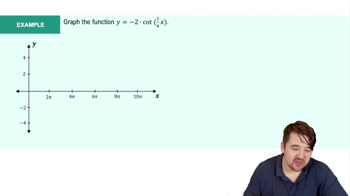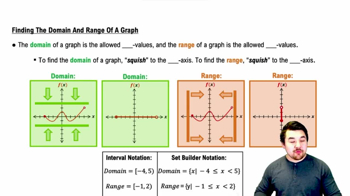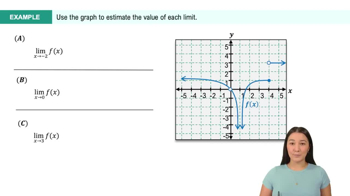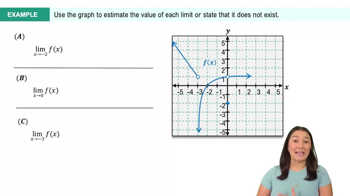Table of contents
- 0. Functions7h 52m
- Introduction to Functions16m
- Piecewise Functions10m
- Properties of Functions9m
- Common Functions1h 8m
- Transformations5m
- Combining Functions27m
- Exponent rules32m
- Exponential Functions28m
- Logarithmic Functions24m
- Properties of Logarithms34m
- Exponential & Logarithmic Equations35m
- Introduction to Trigonometric Functions38m
- Graphs of Trigonometric Functions44m
- Trigonometric Identities47m
- Inverse Trigonometric Functions48m
- 1. Limits and Continuity2h 2m
- 2. Intro to Derivatives1h 33m
- 3. Techniques of Differentiation3h 18m
- 4. Applications of Derivatives2h 38m
- 5. Graphical Applications of Derivatives6h 2m
- 6. Derivatives of Inverse, Exponential, & Logarithmic Functions2h 37m
- 7. Antiderivatives & Indefinite Integrals1h 26m
1. Limits and Continuity
Introduction to Limits
Problem 2.4.65
Textbook Question
Use analytical methods and/or a graphing utility to identify the vertical asymptotes (if any) of the following functions.
f(x)=1/ √x sec x
 Verified step by step guidance
Verified step by step guidance1
Step 1: Identify the domain of the function. The function f(x) = \( \frac{1}{\sqrt{x} \sec x} \) is defined where both \( \sqrt{x} \) and \( \sec x \) are defined and non-zero. \( \sqrt{x} \) is defined for \( x > 0 \), and \( \sec x = \frac{1}{\cos x} \) is defined where \( \cos x \neq 0 \).
Step 2: Determine where \( \sec x \) is undefined. The secant function, \( \sec x \), is undefined where \( \cos x = 0 \). This occurs at \( x = \frac{\pi}{2} + n\pi \), where \( n \) is an integer.
Step 3: Analyze the behavior of the function near the points where \( \sec x \) is undefined. As \( x \) approaches \( \frac{\pi}{2} + n\pi \), \( \cos x \) approaches 0, causing \( \sec x \) to approach infinity or negative infinity, leading to potential vertical asymptotes.
Step 4: Consider the behavior of \( \sqrt{x} \) as \( x \to 0^+ \). As \( x \to 0^+ \), \( \sqrt{x} \to 0^+ \), which causes the function \( f(x) \) to approach infinity, indicating a potential vertical asymptote at \( x = 0 \).
Step 5: Conclude the locations of the vertical asymptotes. Based on the analysis, the vertical asymptotes occur at \( x = 0 \) and \( x = \frac{\pi}{2} + n\pi \) for integer values of \( n \).
Recommended similar problem, with video answer:
 Verified Solution
Verified SolutionThis video solution was recommended by our tutors as helpful for the problem above
Video duration:
2mPlay a video:
Was this helpful?
Key Concepts
Here are the essential concepts you must grasp in order to answer the question correctly.
Vertical Asymptotes
Vertical asymptotes occur in a function when the output approaches infinity as the input approaches a certain value. This typically happens when the function is undefined at that point, often due to division by zero. Identifying vertical asymptotes involves finding values of x that make the denominator zero while ensuring the numerator is not also zero at those points.
Recommended video:

Introduction to Cotangent Graph Example 1
Domain of a Function
The domain of a function is the set of all possible input values (x-values) for which the function is defined. For the function f(x) = 1/√x sec x, the domain is restricted by the square root and the secant function. Understanding the domain is crucial for identifying vertical asymptotes, as any x-value that leads to an undefined function must be considered.
Recommended video:

Finding the Domain and Range of a Graph
Graphing Utility
A graphing utility is a tool, often software or a calculator, that allows users to visualize functions and their behaviors. By plotting the function f(x) = 1/√x sec x, one can observe where the function approaches infinity, indicating vertical asymptotes. Graphing utilities can also help in analyzing the overall shape and trends of the function, providing insights that may not be immediately apparent through algebraic methods alone.
Recommended video:

Graphing The Derivative

 6:47m
6:47mWatch next
Master Finding Limits Numerically and Graphically with a bite sized video explanation from Callie
Start learning





